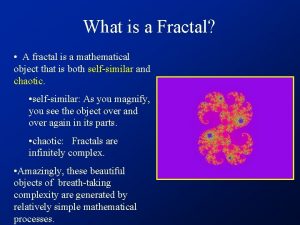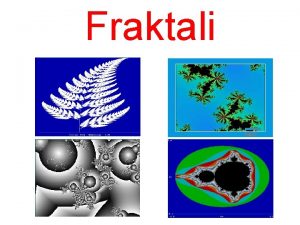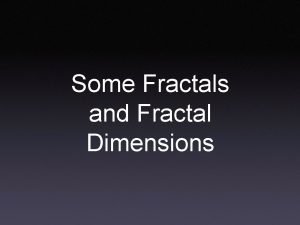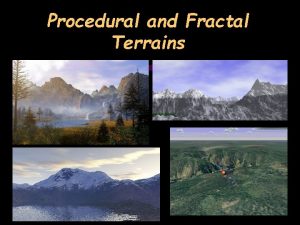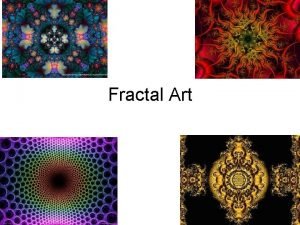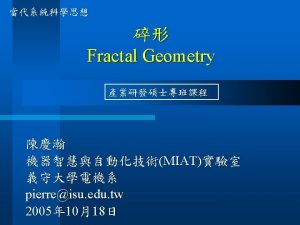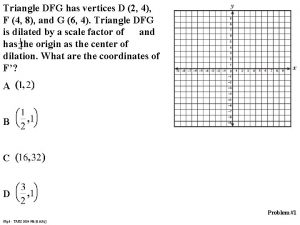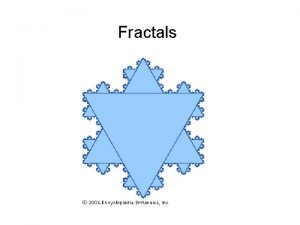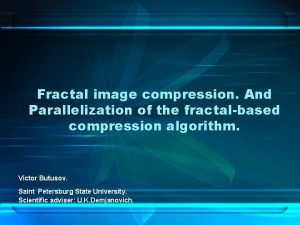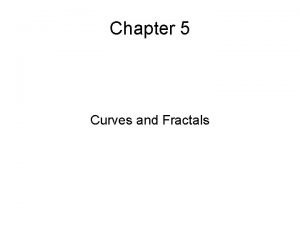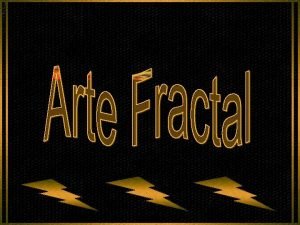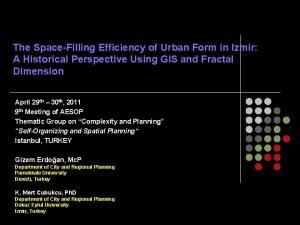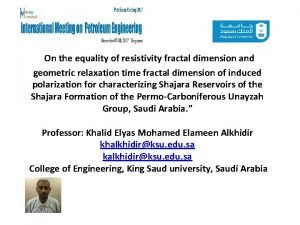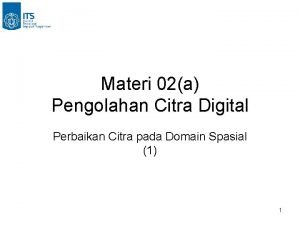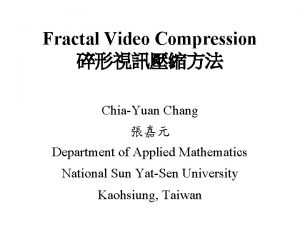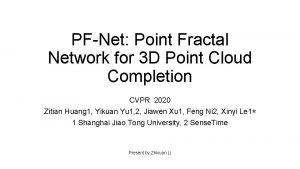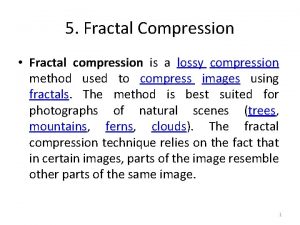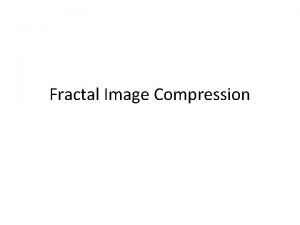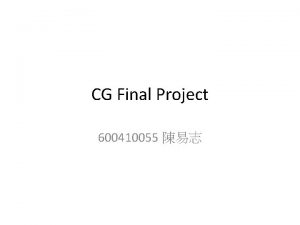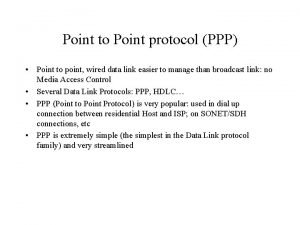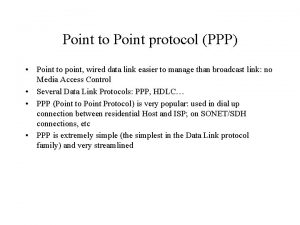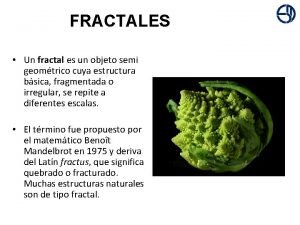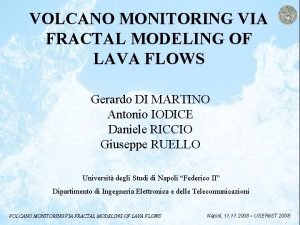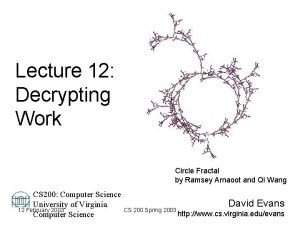PFNet Point Fractal Network for 3 D Point



![Introduction input GT L-GAN Previous work: L-GAN[1]、PCN[2]、RL-GAN-Net[3] PCN Problems: • learning the general character Introduction input GT L-GAN Previous work: L-GAN[1]、PCN[2]、RL-GAN-Net[3] PCN Problems: • learning the general character](https://slidetodoc.com/presentation_image_h/04c62c92c8051be221e97bf2c1b9ad5e/image-4.jpg)













- Slides: 17

PF-Net: Point Fractal Network for 3 D Point Cloud Completion 学院 钱浩 0121511371020

Information Title: PF-Net: Point Fractal Network for 3 D Point Cloud Completion Conference: CVPR 2020 Institute: Shanghai Jiao Tong University & Sense. Time Author: Zitian Huang, Yikuan Yu, Jiawen Xu, Feng Ni, Xinyi Le PDF: https: //arxiv. org/pdf/2003. 00410. pdf Code: https: //github. com/zztianzz/PF-Net-Point-Fractal-Network. git

Introduction Why 3 D Point Cloud Completion? • occlusion, • light reflection, • transparency of surface material • limitations of sensor resolution and viewing angle a loss of geometric and semantic information
![Introduction input GT LGAN Previous work LGAN1PCN2RLGANNet3 PCN Problems learning the general character Introduction input GT L-GAN Previous work: L-GAN[1]、PCN[2]、RL-GAN-Net[3] PCN Problems: • learning the general character](https://slidetodoc.com/presentation_image_h/04c62c92c8051be221e97bf2c1b9ad5e/image-4.jpg)
Introduction input GT L-GAN Previous work: L-GAN[1]、PCN[2]、RL-GAN-Net[3] PCN Problems: • learning the general character of a genus/category but not the local details of a specific object • may change the position of known points: genus-wise distortions [1] Panos Achlioptas, Olga Diamanti, Ioannis Mitliagkas, and Leonidas J Guibas. Learning representations and generative models for 3 D point clouds. ICML, 2018. [2] Wentao Yuan, Tejas Khot, David Held, Christoph Mertz, and Martial Hebert. PCN: Point completion network. 3 DV, 2018. [3] Muhammad Sarmad, Hyunjoo Lee, and Young Min Kim. RL-GAN-Net: A reinforcement learning agent controlled GAN network for real-time point cloud shape completion. CVPR, 2019.

Introduction PF-Net: (1)Only output the missing part • retains the geometric features of the original point cloud • focus on perceiving the location and structure of missing parts (2)Better feature extraction • Multi-Resolution Encoder(MRE): contain both local & global, low-level & high-level features (3)Tackle genus-wise distortion: • Point Pyramid Decoder (PPD): predict primary, secondary and detailed points from layers of different depth • Primary points and secondary points: serve as the skeleton center points 3 parts: • Multi-Resolution Encoder (MRE), • Point Pyramid Decoder (PPD) • Discriminator Network

Introduction

Method PF-Net:Feature Points Sampling iterative farthest point sampling (FPS) (1)A: selected set(n points) B: unselected set(m points) (2)dbi: the distance between a point in B ( P b ) and i-th point in A ( 0 <= I <=n-1 ) (3)pbj = min([db 0, db 1, … dbn-1, ]) (4)selected_points = argmax([pb 0, pb 1, … pbm-1, ])

Method PF-Net:Multi Resolution Encoder • Combined Multi-Layer Perception (CMLP): . Low-level & high-level features 1024 1920

Method Local & global features:

Method PF-Net:Point Pyramid Decoder primary. secondary detailed

Method PF-Net:Loss Function 2 parts: multi-stage completion loss & adversarial loss. . multi-stage completion loss YGT’, YGT’’: subsampled ground truth. They are the feature points of the missing region

Method PF-Net:Adversarial Loss MRE : Multi-Resolution Encoder PPD : Point Pyramid Decoder predicted missing region Discriminator:a classification network with similar structure as CMLP [64 -64 -128 -256] -> Latent vector F : 448(64+128+256) FC[256, 128, 16, 1] sigmoid

Experiments Evaluation index • Pred → GT error: • the average squared distance from each point in prediction to its closest in ground truth • measure how difference the prediction is from the ground truth • GT → Pred error: • the average square distance from each point in the ground truth to its closest in prediction • Indicate the degree of the ground truth surface being covered by the shape of the prediction

Experiments Overall point cloud

Experiments Missing point cloud

Experiments

THANK YOU FOR WATCHING 钱浩 0121511371020
 What is the mountain
What is the mountain Ken perlin
Ken perlin Chaos theory jurassic park
Chaos theory jurassic park Cantor set fractal dimension
Cantor set fractal dimension Fractal terrains 4
Fractal terrains 4 How to make fractal art
How to make fractal art What is a fractal
What is a fractal Helecho de barnsley
Helecho de barnsley Triangle lmn has the vertices shown on the coordinate grid
Triangle lmn has the vertices shown on the coordinate grid What does this mean
What does this mean Yuvpak compressed fractal image
Yuvpak compressed fractal image What are curves in computer graphics
What are curves in computer graphics Arte fractal
Arte fractal Space filling fractal
Space filling fractal Fractal dimension definition
Fractal dimension definition Fractal
Fractal Chia compression
Chia compression Define point processing
Define point processing
